Creating a No Smoking Policy in the Workplace that Sticks
EX Program
MARCH 1, 2022
This site uses cookies to improve your experience. To help us insure we adhere to various privacy regulations, please select your country/region of residence. If you do not select a country, we will assume you are from the United States. Select your Cookie Settings or view our Privacy Policy and Terms of Use.
Cookies and similar technologies are used on this website for proper function of the website, for tracking performance analytics and for marketing purposes. We and some of our third-party providers may use cookie data for various purposes. Please review the cookie settings below and choose your preference.
Used for the proper function of the website
Used for monitoring website traffic and interactions
Cookies and similar technologies are used on this website for proper function of the website, for tracking performance analytics and for marketing purposes. We and some of our third-party providers may use cookie data for various purposes. Please review the cookie settings below and choose your preference.

EX Program
MARCH 1, 2022

EX Program
APRIL 30, 2025
REGISTER NOW Tobacco use continues to weigh heavily on Indiana, which sees significantly higher usage rates than the national average. This translates to over $3 billion in annual healthcare costs for Indiana businesses, much of it tied to chronic disease. Indiana University Health (IU Health), the states largest nonprofit healthcare system, is taking bold [.
This site is protected by reCAPTCHA and the Google Privacy Policy and Terms of Service apply.
New Research-Backed Strategies to Empower Managers as Culture & Engagement Leaders
Unlock The Hidden Value Of Group Medicare Advantage For 2026
Smart Tools & Strong Teams: A People-First Approach to AI in Sales
Why Equity-Driven Talent Strategies Are The Competitive Advantage You Need
Stay Ahead Of I-9 & Immigration Changes: Compliance Strategies for Employers

EX Program
JULY 14, 2025
For healthcare systems, the challenge of quitting tobacco extends beyond patient care; it starts with supporting their own people. At Indiana University Health (IU Health), the largest nonprofit health system in Indiana, helping employees quit tobacco isn’t just about personal health. It’s a strategic priority to build a healthier workforce and reduce rising healthcare costs. [.
New Research-Backed Strategies to Empower Managers as Culture & Engagement Leaders
Unlock The Hidden Value Of Group Medicare Advantage For 2026
Smart Tools & Strong Teams: A People-First Approach to AI in Sales
Why Equity-Driven Talent Strategies Are The Competitive Advantage You Need
Stay Ahead Of I-9 & Immigration Changes: Compliance Strategies for Employers

EX Program
JULY 14, 2025
For healthcare systems, the challenge of quitting tobacco isn’t limited to patient populations—it begins within their own walls. At Indiana University Health (IU Health), the largest nonprofit health system in the state, tobacco cessation is viewed not just as a personal health matter. Instead, like many employers, IU Health sees helping people quit nicotine as [.

EX Program
JULY 26, 2024
Download Tip Sheet When it comes to helping members quit tobacco, there’s one major, common pain point among health plans. It’s lack of awareness of what you offer. Let’s solve that. Here’s how to promote smoking cessation to successfully engage members in the quit-tobacco program you offer. Easy tips to boost awareness Members can’t sign [.

EX Program
APRIL 1, 2025
When people smoke and vape at the same time (called dual use), do they face increased health and financial risks? The answer is yes, but they arent the only ones who feel the pinch. Dual users can produce even more costly tobacco-related illnesses for your organization. However, you can reduce this financial burdenfor your organization [.] Read More. from Why people who smoke and vape need extra help quitting The post Why people who smoke and vape need extra help quitting appeared first on EX Pr

EX Program
MAY 13, 2025
DOWNLOAD CASE STUDY A large conglomerate needed a digital tobacco cessation program to engage a wide range of employees and their dependents. Engagement was critical, especially given underperformance with previous vendors. EX Program stood out for our evidence-based methodology, ease of access, and ability to deliver outcomes. Overview This leader in the food and [.

EX Program
JULY 31, 2024
Abstract There is an urgent need to address young adult (YA) vaping. However, there is limited vaping cessation intervention research, particularly studies tested via experimental designs. This manuscript focuses on YA vaping and critical needs for research to advance vaping cessation interventions for YAs. The smoking cessation literature, especially regarding YA smoking, provides evidence and [.

EX Program
JULY 10, 2025
The team behind EX Program, the leading digital tobacco cessation solution developed by Truth Initiative in collaboration with Mayo Clinic, today announced the launch of EX Program Go — a scalable, low-cost program designed specifically for small to mid-sized employers. As part of the EX Program Enterprise suite, EX Program Go helps organizations support employees with nicotine [.

EX Program
MAY 16, 2025
When we ask buyers about the key factors influencing their choice of a tobacco cessation program, quit rate consistently ranks at the top. But what exactly constitutes a good quit rate? Here are 5 key questions to ask cessation vendors, with tips on how to interpret their answers. Question 1: How does your program measure [.] Read More. from What is a Strong Quit Rate for a Tobacco Cessation Program?

EX Program
MAY 5, 2025
What hidden healthcare costs lurk in your organization? By helping employees quit smoking, vaping, or using other tobacco, employers can reduce healthcare costs and boost workplace productivity. Today, employers face pressure from rising healthcare costs, often associated with chronic conditions such as cancer, heart disease, and musculoskeletal conditions.

EX Program
APRIL 30, 2025
REGISTER NOW May 20, 2025, 2:00 PM ET Hidden healthcare cost drivers specifically from tobacco use continues to weigh heavily on Indiana, which sees significantly higher usage rates than the national average. This translates to over $3 billion in annual healthcare costs for Indiana businesses, much of it tied to chronic disease. Indiana University Health [.

EX Program
APRIL 22, 2025
Youth tobacco control has made significant strides over the past two decades in addressing the risks of tobacco use for youth and young adults. Combustible cigarette use among teens has reached an all-time low, with only 1.4% currently smokingdown from 34.5% of high school students in 2000. Similarly, youth e-cigarette use has dropped from a [.] Read More. from Risks of Tobacco Use for Youth and Young Adults Remain Serious Threat The post Risks of Tobacco Use for Youth and Young Adults Remain Se

EX Program
APRIL 8, 2025
[.] Read More. from NEEBC Annual Summit 2025 The post NEEBC Annual Summit 2025 appeared first on EX Program.

EX Program
MARCH 31, 2025
[.] Read More. from Thrive Summit 2025 The post Thrive Summit 2025 appeared first on EX Program.

EX Program
DECEMBER 18, 2024
REGISTER NOW Late 2024 was a busy time for tobacco surcharge lawsuits. Plaintiffs filed 10 class action lawsuits against employers that imposed a tobacco surcharge through their workplace wellness program Notable similarities across the lawsuits include that all were filed as class actions, all were filed in federal courts, and all were filed in [.] Read More. from Tobacco Surcharges in Legal Crosshairs: Are You Compliant?

EX Program
DECEMBER 18, 2024
For employers and health plans, digital health solutions are a growing component of care delivery and healthcare spending. Evidence of improved health outcomes is a top priority when evaluating digital health solutions. But how can payers best measure outcomes with digital solutions for addiction, given its chronic relapsing nature? With tobacco cessation, for example, [.

EX Program
DECEMBER 16, 2024
[.] Read More. from Tobacco Surcharges in Legal Crosshairs: Are You Compliant? The post Tobacco Surcharges in Legal Crosshairs: Are You Compliant? appeared first on EX Program.

EX Program
NOVEMBER 25, 2024
Need ideas on how to inspire more individuals to stop smoking, vaping, and nicotine use? Our quit-smoking calendar can help. Smart employers and health plans know that offering the right nicotine addiction program is just the start. The magic happens in the way you ensure tobacco users know effective help is easily accessible. Get tips [.] Read More. from Tip Sheet: Inspire More to Quit with 2025 Quit-smoking Calendar The post Tip Sheet: Inspire More to Quit with 2025 Quit-smoking Calendar appea

EX Program
OCTOBER 30, 2024
Different organizations, states, and local laws have different answers to the question: “what are the smoking rules at work?” For more insights on how to best implement a no tobacco use policy in the workplace, download our Tip Sheet: How to Implement a Tobacco-free Workplace To stay compliant as well as reduce tobacco use and [.] Read More. from What are the Smoking Rules at Work?

EX Program
OCTOBER 22, 2024
Fall 2024 has been a busy time for tobacco surcharge lawsuits. To date, plaintiffs have filed 9 class action lawsuits against employers who imposed a tobacco surcharge through their workplace wellness program. For companies that seek to reduce tobacco use among employees, tobacco surcharges, when implemented successfully, can be an effective tool to motivate individuals [.

EX Program
OCTOBER 10, 2024
When looking to cut costs, health plans may put smoking and vaping cessation programs on the chopping block. But if your health plan views its smoking and vaping cessation programs as expendable, cutting them is not the solution. It’s time to find a better vendor. Here are 4 signs health plans need better smoking and [.] Read More. from 4 Signs Health Plans Need Better Smoking and Vaping Cessation Programs The post 4 Signs Health Plans Need Better Smoking and Vaping Cessation Programs appeared f

EX Program
AUGUST 16, 2024
Confused about what to do about vaping in the workplace? You’re not alone. Conflicting information about e-cigarettes—also called vaping—has many HR managers and benefit consultants looking for answers to questions like: Are e-cigarettes as harmful as other tobacco products? Is there a risk of secondhand vape smoke with e-cigarettes? Should e-cigarettes be included in a [.

EX Program
AUGUST 1, 2024
Objectives The landscape of availability, policies, and norms around e-cigarette use and cessation has changed rapidly in the last few years. There is also high interest in quitting vaping among teens and young adults. Understanding the motivation of those who want to quit vaping is important for effective intervention development. This analysis compares user-submitted reasons [.

EX Program
MAY 14, 2024
Smoking is expensive and contributes to a wide range of costly diseases, including some that may not be on your radar. You likely know the most expensive medical conditions associated with smoking—chronic illnesses like cancer and heart disease. These conditions cost over $600 billion each year and make up a large percentage of health plan [.] Read More. from 5 Sneaky Ways Smoking Is Expensive for Healthcare The post 5 Sneaky Ways Smoking Is Expensive for Healthcare appeared first on EX Program.
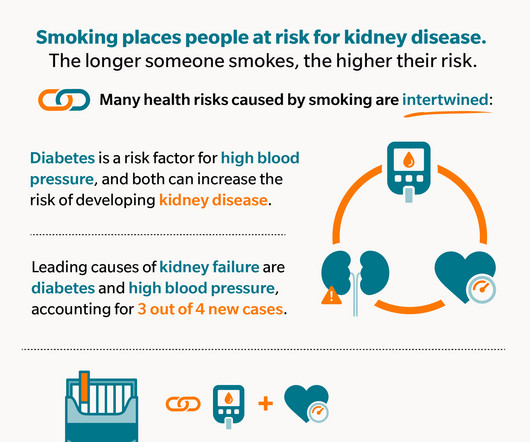
EX Program
APRIL 30, 2024
The costs of smoking and kidney disease are a substantial burden across healthcare systems and payers. But helping individuals quit smoking can significantly reduce the risk of kidney disease. Among those with kidney disease, quitting smoking can also improve outcomes. Here are the facts you need to know. Prevalence of kidney disease and smoking More [.

EX Program
APRIL 19, 2024
Employers face a significant challenge in supporting employees who vape. The EX Program's Dr. Amanda Graham shares insights into vaping, tobacco surcharges, and reasonable alternatives.
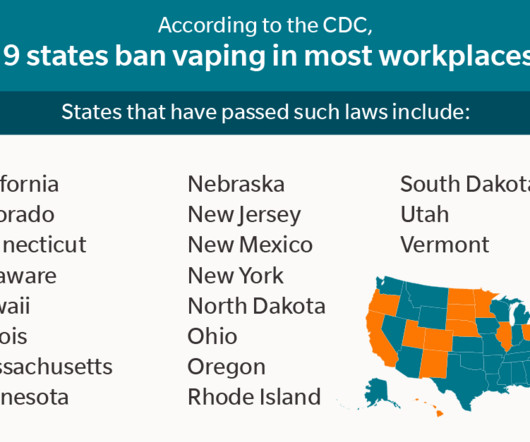
EX Program
APRIL 10, 2024
E-cigarette use can negatively affect indoor air quality and put others at risk for secondhand exposure in workplaces. And more of your employees may be using e-cigarettes in the workplace than you realize. A Truth Initiative survey found 76% of the surveyed e-cigarette users reported having vaped at work. But is it legal to vape at work? [.] Read More. from Can You Get Fired for Vaping at Work?
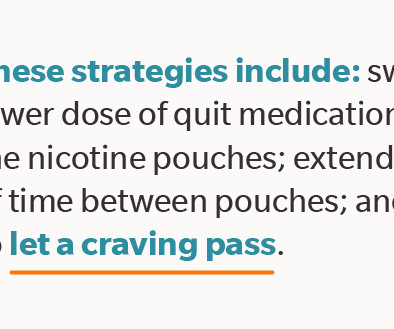
EX Program
MARCH 13, 2024
Those working in white-collar professional services typically have lower rates of smoking and vaping than other industries. But a creeping trend of nicotine pouch use among workers in demanding industries, such as finance and technology, could be changing things. Nicotine pouches are tiny bags of nicotine that fit under the lip. Zyn nicotine pouches are [.
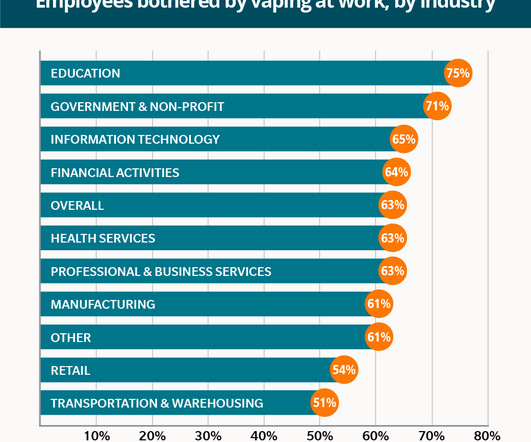
EX Program
MARCH 6, 2024
On college campuses, the sights are often predictable: school colors, packed libraries before finals, and now, an increasing number of vape/smoke-free campus signs. As of 2023, over 2,600 campuses in the U.S. have implemented tobacco-free policies, up from 1,816 in 2017, with many more following suit thanks to Truth Initiative’s tobacco/vape-free college program.

EX Program
FEBRUARY 21, 2024
So, your company is ready to implement an incentive or a tobacco surcharge on insurance for employees who use tobacco products. The next task at hand is identifying individuals eligible for the incentive or premium discount. To achieve this, many organizations rely on self-reported data through a tobacco attestation form. But how do you ensure [.] Read More. from How to Ensure Honesty on a Tobacco Attestation Form The post How to Ensure Honesty on a Tobacco Attestation Form appeared first on EX
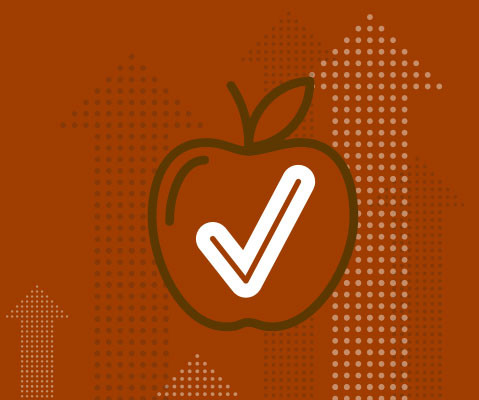
EX Program
FEBRUARY 2, 2024
Helping members quit tobacco offers many advantages to your health plan, including improved health outcomes, lower costs of care, and healthier families. While the benefits of quitting tobacco are widely known, you may still see low engagement in the tobacco cessation program you offer. You are not alone. See impactful and proven initiatives that change [.
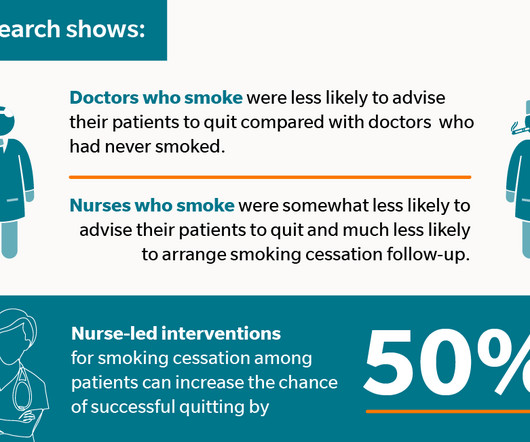
EX Program
JANUARY 25, 2024
Doctors and nurses who smoke can affect more than your organization’s healthcare costs; they can influence the quality of care for patients, too. Healthcare professionals are some of the most influential employees for a clinic, hospital, or health care system. They impact everything from the work environment to patient satisfaction and behavior. Having healthcare professionals [.

EX Program
JANUARY 17, 2024
Everyone knows the risks of smoking while pregnant, but what about the risks of vaping while pregnant? As the prevalence of e-cigarette use among young adults increases, the likelihood of vaping among women of reproductive age also increases. Studies show up to 7% of pregnant women use e-cigarettes. However, this percentage is likely an underestimate [.

EX Program
JANUARY 3, 2024
About 70% of EX Program employer clients use some form of quit tobacco-incentive or surcharge. Here’s why: When implemented successfully, a surcharge can motivate people to act who might not feel confident about quitting or might not be interested in quitting right now. An incentive can also guide tobacco users to resources that effectively boost [.
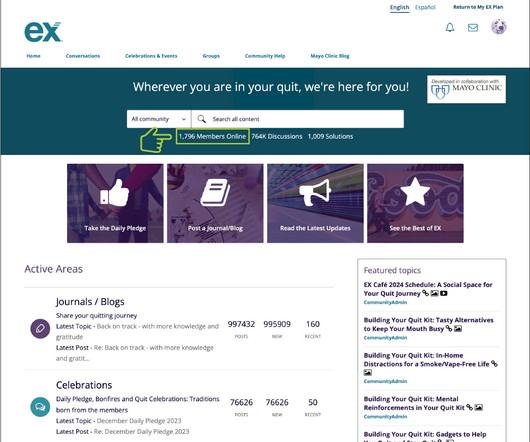
EX Program
JANUARY 3, 2024
Every day, millions of U.S. adults struggle with tobacco addiction. At Truth Initiative, we’re on a mission to change this. Our vision is to create a world where young people reject tobacco and anyone can quit. Inspired by Mayo Clinic’s effective on-site treatment model for tobacco addiction, we partnered with Mayo Clinic to create EX [.] Read More. from Empowering Quitters: A Year in Review of EX Program’s Impact on Tobacco Addiction The post Empowering Quitters: A Year in Review of EX Program’
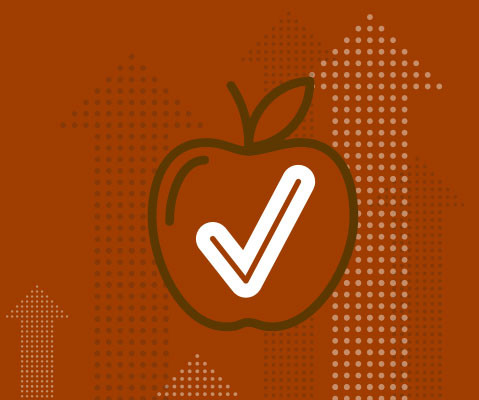
EX Program
JANUARY 3, 2024
Motivating tobacco users to quit or attempt to quit is a priority for over 50% of employers, often achieved through various incentives, including tobacco surcharges. Optimizing the premium differential, along with effective communication on how to eliminate it, can significantly boost the number of individuals attempting to quit. As you assess your benefits to enhance [.

EX Program
DECEMBER 4, 2023
[.] Read More. from Former Smoker Shares How She Quit Menthol Cigarettes The post Former Smoker Shares How She Quit Menthol Cigarettes appeared first on EX Program.
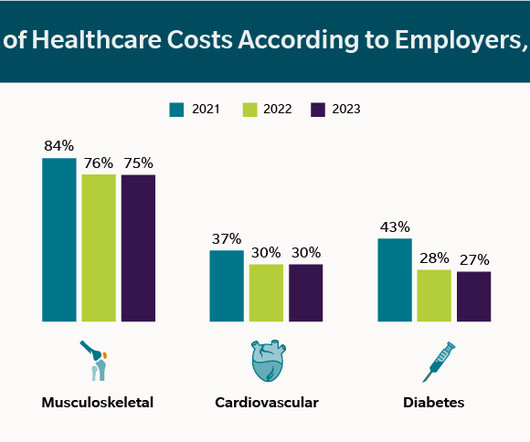
EX Program
DECEMBER 5, 2023
Everyone knows smoking causes lung cancer. But what about smoking and breast cancer? Or smoking and bladder cancer? Many employers may not be aware of how many cancers are linked to tobacco use—and how much that may be costing. Cancer costs today are increasingly top of mind for employers as they look to contain healthcare [.] Read More. from Smoking and Cancer: More Than Just Lung Cancer The post Smoking and Cancer: More Than Just Lung Cancer appeared first on EX Program.

EX Program
DECEMBER 4, 2023
As part of its commitment to trailblaze addiction treatment, the EX Program introduced a powerful new feature in its EX Community: Live Events. Embarking on the journey to quit tobacco is no easy feat, and the EX Community has been a steadfast companion for individuals navigating the challenges of addiction for over a decade. Now, [.] Read More. from EX Community’s New Live Events Expand Support in Quit Smoking Support Groups The post EX Community’s New Live Events Expand Support in Quit Smoking

EX Program
DECEMBER 4, 2023
Need ideas on how to inspire more individuals to stop smoking, vaping, and nicotine use? Our quit-smoking calendar can help. Smart employers and health plans know that offering the right nicotine addiction program is just the start. The magic happens in the way you ensure tobacco users know effective help is easily accessible. Get tips [.] Read More. from Tip Sheet: Inspire More to Quit with 2024 Quit-smoking Calendar The post Tip Sheet: Inspire More to Quit with 2024 Quit-smoking Calendar appea

EX Program
NOVEMBER 29, 2023
When you explore interventions to quit smoking, you might see programs that claim to be “tailored” or specially designed for certain groups or populations. But are these programs more effective in enrolling and engaging individuals? As a councilmember of the Society for Research on Nicotine and Tobacco’s Health Equity Network, I am deeply committed to [.

EX Program
NOVEMBER 28, 2023
[.] Read More. from More addictive and harder to quit: Health groups want Black menthol smokers to know support groups can help The post More addictive and harder to quit: Health groups want Black menthol smokers to know support groups can help appeared first on EX Program.

EX Program
NOVEMBER 15, 2023
[.] Read More. from How this Runner Finally Quit His Secret Vaping Life The post How this Runner Finally Quit His Secret Vaping Life appeared first on EX Program.
Expert insights. Personalized for you.
Are you sure you want to cancel your subscriptions?

Let's personalize your content